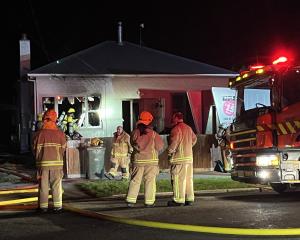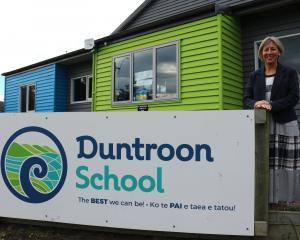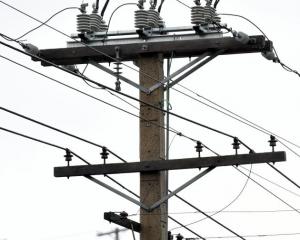Those in opposition include a newly formed residents' group.
Three developers - Five Rivers Ltd, Southdown Holdings Ltd and Williamson Holdings Ltd - have applied to Environment Canterbury (ECan) for resource consents to develop the dairy farms, which will house up to 17,850 cows in cubicle stables, producing up to 1.783 million litres of dairy effluent a day.
Yesterday, the subject was hotly debated in Parliament, while dairy giant Fonterra said it feared the developments could adversely affect New Zealand's dairying reputation.
Tourism organisation Dunedin Host described the plans as "insanity", with the potential to damage Dunedin's and the country's tourism.
And the Omarama Residents' Association, formed at a public meeting in August to pursue plans to redevelop the town's memorial hall into a multi-purpose community centre, has also entered the fray.
Chairman Bill Gordon said yesterday the issue was discussed at the association's meeting last week.
"The applications and their potential consequences are a bit mind-boggling for many people to comprehend, but once some of the figures are understood then the reaction occurs."
Initially, some members were not sure the association should get involved, but once the effects had been discussed and understood, it decided a submission should be made opposing the developments.
"This is a significant step. For business and farming representatives to send a clear message that this type of operation is not wanted is quite a revelation," Mr Gordon said.
The developers say housing the cows in cubicle stables, which could cost up to $3 million each, brings financial and environmental benefits.
Each cubicle stable will house cows full-time between March and October and 12 hours a day between November and February.
Dairy effluent will be stored in ponds then disposed of on land.
This has led to claims of "factory farming", although the companies are using the cubicle approach to shelter cows from the extreme winters and summers in the area.
Fonterra's general manager of milk supply, Tim Deane, said while not knowing all the details, his company had real concerns about the environmental sustainability of the type of farming proposed by the developers.
"We will be watching carefully to see if farms are able to comply with the regulations governing animal welfare and sustainable land use," he said.
The World SPCA held New Zealand up as an example of a country that used free-range systems.
Fonterra was comfortable with some dairy farming techniques that supported pasture-based farming, such as feed pads and supplementary feeding, but did not believe stall-based farming of the type proposed was consistent with New Zealand's reputation as a source of dairy products from substantially grass-fed cows, he said.
Dunedin Host director John Owens said the proposed farms would have a negative impact on tourism and would provide ammunition for those attacking New Zealand's "clean green" image.
The tourism and accommodation group would make a submission opposing granting resource consents for the developments.
"It's the type of thing that will derail the whole of New Zealand's tourism industry. It's insanity," he said.
In evidence filed with ECan, Five Rivers' director Kees Zeestraten said one of his Southland dairy farms housed cows in cubicles.
Built in 2004, it could house up to 500 cows out of bad weather during the winter and at night in early autumn and spring.
In a typical "cubicle stable", also known as a "herd home":
• Cows were housed in individual cubicle stables but able to walk around.
• Silage and hay was fed twice a day into feeding lanes, an efficient method of feeding out.
• Effluent was continuously removed by an automatic scraper, stored in effluent ponds then spread on to paddocks.
• Milking sheds were usually nearby or an extension of the cubicle stables.
Mr Zeestraten had seen several improvements on his Southland farm as a result, including:
• Cows' production performance.
• Higher pasture production.
• Feed being used effectively.
• Less fertiliser use and more efficient effluent distribution.
• Less soil compaction.
• Animal welfare.
"While each unit may cost up to $3 million, I understand there are a number of financial benefits and I am prepared to invest in an operation that will result in both production and environmental benefits," he said.












